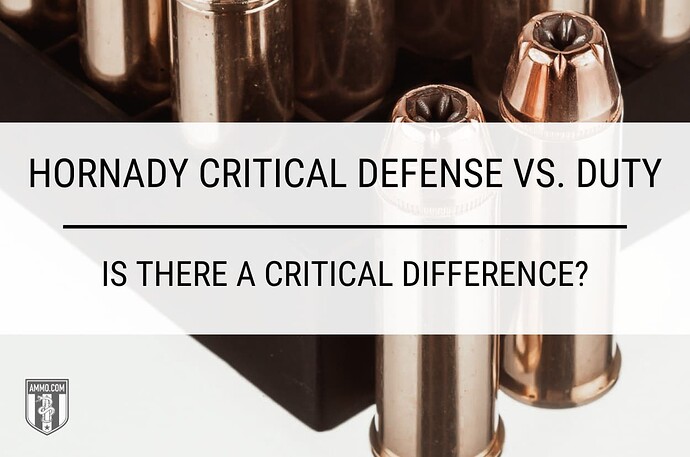I remember struggling to understand the difference between Hornady Critical Defense vs. Duty when I was still new to concealed carry. What are the differences between the two? Is one better than the other? Which one did I need?
For reasons we’ll soon discuss, I eventually went with Hornady Critical Defense – but Hornady Critical Duty might be the better option for you. Let’s explore what makes these two Hornady ammunition lines unique.
Hornady Critical Defense vs. Critical Duty: What’s the Difference?
According to Hornady, the primary difference between Critical Defense and Critical Duty is this: Critical Defense is optimized for the short-barreled handguns that are popular for concealed carry among civilians, whereas Critical Duty is designed for the kinds of full-size handguns typically carried by law enforcement officers (hence the “Duty”).
What Are the Key Differences Between Hornady Critical Defense and Hornady Critical Duty?
The key differences between Hornady’s Critical Defense and Critical Duty ammo lines are their recoil, bullet design, and terminal performance.
Critical Defense vs. Critical Duty: Recoil
If you were to fire examples of both ammo lines in the same pistol, you would note that the Critical Defense load generates slightly less recoil and muzzle flip. Such performance helps the shooter fire more comfortably, as well as land faster and more accurate follow-up shots while they’re firing in defense of their life.
If you are especially sensitive to recoil, try Hornady Critical Defense Lite. It’s loaded with lightweight projectiles which generate abnormally low recoil.
Bullet Design
Critical Defense handgun ammunition is loaded with Flex Tip eXpanding (FTX) bullets. The FTX is a jacketed hollow point (JHP) with a supple polymer insert inside its nose cavity. In addition to preventing the nose cavity from becoming ineffective as a result of clogging with debris, the Flex Tip promotes more reliable expansion by compressing and pushing outward during penetration of flesh.
Critical Duty handgun ammunition is loaded with FlexLock bullets. The FlexLock’s terminal performance benefits from the same Flex Tip as the FTX. Unlike the FTX, the FlexLock features an InterLock band that keeps its high-antimony lead core and thick copper shank anchored together during penetration of barriers and flesh. The payoff is reliably deep penetration, even if the threat is shielded by barriers such as sheet metal or safety glass.
The FlexLock exhibits what is often referred to as “barrier blind” performance. Such performance can be crucial to helping law enforcement officers neutralize threats that have taken cover behind barriers. It can be helpful to civilians for the same reason, but take caution: A bullet that penetrates barriers so effectively is at higher risk of over-penetrating the threat and injuring innocent bystanders.
Continue reading Hornady Critical Defense vs. Duty: Is There a Critical Difference? on Ammo.com
